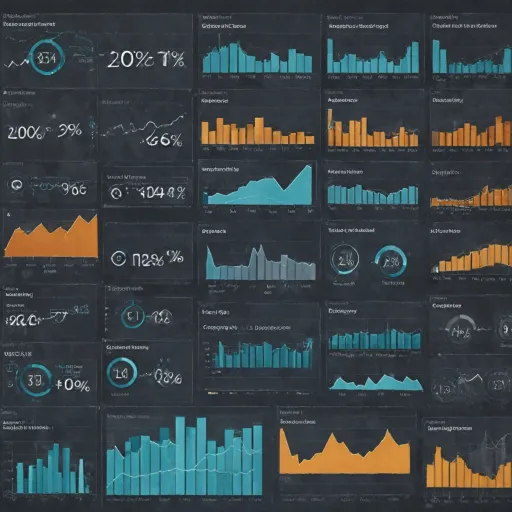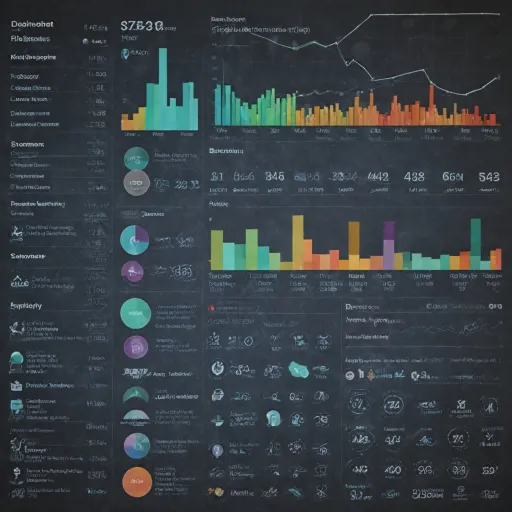
Understanding Representative Management
Decoding the Concept of Representative Management
In the realm of Human Resources Analytics, understanding representative management is pivotal to the successful implementation of quality management systems (QMS). Essentially, it involves designating a management representative to ensure that the organization's processes align with ISO standards and customer requirements. Companies, no matter their size – from smaller companies to top-tier corporations – benefit from having a designated representative who articulates responsibilities, reviews compliance, and handles internal audits. Quality management remains the core focus, with management representatives ensuring that management systems comply with ISO standards and other pertinent regulations. They serve as liaisons between the organization and its employees, bridging any gaps between top management and the workforce. This alignment not only helps in meeting compliance requirements but also aids in achieving the company's objectives and targets. When appointing a management rep, it’s crucial to consider their skills and previous experience. A bachelor’s degree coupled with experience in project management and quality manual preparation can prove beneficial in fulfilling the responsibilities of a management representative effectively. Their role doesn't end with compliance checks; they are instrumental in ensuring that the management team is well-informed and equipped to tackle both daily operational tasks and strategic project objectives. For more insights into navigating this complex role, you can explore through this insightful guide that delves into the key challenges and insights associated with management representatives.Data Collection and Analysis Techniques
Techniques for Gathering and Evaluating Data
In the realm of representative management within HR analytics, collecting and analyzing data is crucial to meeting the quality management standards and ensuring effective processes. Here's a closer look at the techniques that play a critical role:
- Objective Data Collection: Establishing clear objectives and targets is essential when gathering data. This helps in aligning with ISO requirements and maintaining quality management systems (QMS). It ensures that collected data is relevant and data processes are compliant with organizational requirements.
- Internal Audits: Conducting regular internal audits is a vital aspect of the quality management system. These audits monitor the effectiveness of representative management strategies and ensure that the company adheres to established standards and practices. Internal audits are particularly beneficial for smaller companies aiming to improve their quality processes.
- Use of Management Review: A regular management review allows organizations to assess the efficiency of their management systems and identify areas for improvement. Reviews can help in understanding how well the organization's representatives are meeting customer requirements and enhancing project outcomes.
- Appointing a Management Representative: A dedicated management representative is crucial for ensuring responsibility authority within the company. This role involves overseeing compliance, optimizing the quality manual, and engaging the top management team in broadening management systems and improving rep quality.
- Leveraging Technology: Employing advanced technological tools can elevate data collection and analysis. These technologies can automate parts of the project management processes, enhance data accuracy, and reduce manual errors.
Ensuring that data collection and analysis methods are robust can greatly impact the effectiveness of a management rep system. Additionally, having a clear training matrix can optimize skills development, benefiting both employees and the organization.
Challenges in Representative Management
Identifying Obstacles in Managing Representatives
In the realm of HR analytics, implementing effective management of representatives involves overcoming various challenges that arise during execution. These challenges often affect the quality and compliance of the management systems. The top management is responsible for ensuring that representatives are empowered with clarity in their roles and responsibilities. Smaller companies, in particular, might find it daunting to appoint management reps with the required authority, especially when resources are scarce. Management reps need to be equipped with skills to perform management review, internal audits, and understand customer requirements to comply with organizational standards, including ISO and other quality management systems (QMS). Another critical topic is the compatibility of the representative management strategies with the specific regulatory requirements within the respective industries, such as the medical device sector. The quality manual and other documentation processes must align with these standards to ensure a seamless operation. The complexity of these processes may lead to resistance from employees, possibly due to a lack of understanding or insufficient training. This can be exacerbated by the absence of a clear project management system that aligns with company objectives and targets. The quality manager, alongside the management team, needs to address such resistance by fostering a culture of open communication and continuous feedback, allowing for regular management review sessions. Internal audits serve as a valuable tool to evaluate and improve the existing systems and help in addressing issues at their root, ensuring that representative management processes evolve to meet the company’s changing dynamics. By understanding these challenges, organizations can develop more robust strategies, ensuring the systems in place not only meet compliance but also actively contribute to the organization’s success. Understanding the role and authority of a management representative becomes crucial in this quest for quality and performance excellence. Discover more about disparate impact and disparate treatment in HR analytics to further address potential challenges in HR analytics.Tools and Technologies
Critical Tools and Technologies in Representative Management
In the evolving landscape of representative management, the right tools and technologies are crucial in ensuring efficiency, compliance, and top-notch quality. Deploying an effective management system can significantly streamline processes and meet organizational objectives. Implementing a Quality Management System (QMS) is vital for any organization aiming to meet ISO standards and align with customer requirements. This system helps in regular management reviews and ensures compliance through consistent processes. Smaller companies, in particular, can benefit from adopting a robust QMS, as it provides a structured framework that enhances accountability and efficiency. Project management software often plays a pivotal role in managing representatives effectively. It supports the management team in delineating responsibilities, assessing project requirements, and setting objectives targets, ultimately contributing to seamless organization processes. Internal audits, supported by the right tools, are indispensable for identifying non-conformances and ensuring continual improvement. A quality manager can leverage these technologies to conduct thorough audits, essential in maintaining quality objectives and ensuring the company adheres to regulatory requirements, such as those in the medical device industry. Another vital aspect is appointing a management representative or management rep with a Bachelor degree or relevant skills. This individual acts as the liaison between the management team and quality objectives, ensuring all requirements are met and employees are aware of their responsibilities. Technology also facilitates the development of a comprehensive quality manual. This essential document outlines the company’s policies, processes, and the responsibilities of top management, ensuring everyone is aligned with the organization’s goals. Ultimately, the right tools and technologies are enablers for organizations to efficiently manage their representatives, meet quality standards, and achieve their strategic objectives.Best Practices for Implementation
Key Practices for Successful Implementation
Implementing representative management in HR analytics effectively requires adherence to certain best practices. These ensure the alignment of your organization's management rep efforts with broader quality management systems (QMS), ISO standards, and organizational goals.- Align Objectives with Organizational Goals: The objectives and targets of your representative management should be aligned with your organization’s overarching goals and customer requirements. Ensuring buy-in from top management is crucial for sustained support and resource allocation.
- Define Clear Responsibilities: Clearly defining the responsibilities, authority, and skills of the management representative ensures accountability and effective execution of roles. Developing a quality manual that specifies the roles and processes helps maintain clarity throughout the organization.
- Conduct Regular Management Reviews: Regular management reviews are vital to assess compliance, review objectives, and ensure that the management systems are functioning as intended. Consistent internal audits help in identifying areas for improvement and maintaining high-quality standards.
- Utilize Appropriate Tools and Technologies: Leveraging suitable project management and quality management tools can streamline processes. Systems designed for smaller companies or specific industries, such as medical device fields, can enhance efficiency and compliance.
- Provide Continuous Training: Continuous employee training and development are essential to keep pace with the changing requirements and regulations. A management rep must be well-versed in the latest processes and technologies to effectively lead and manage projects.













